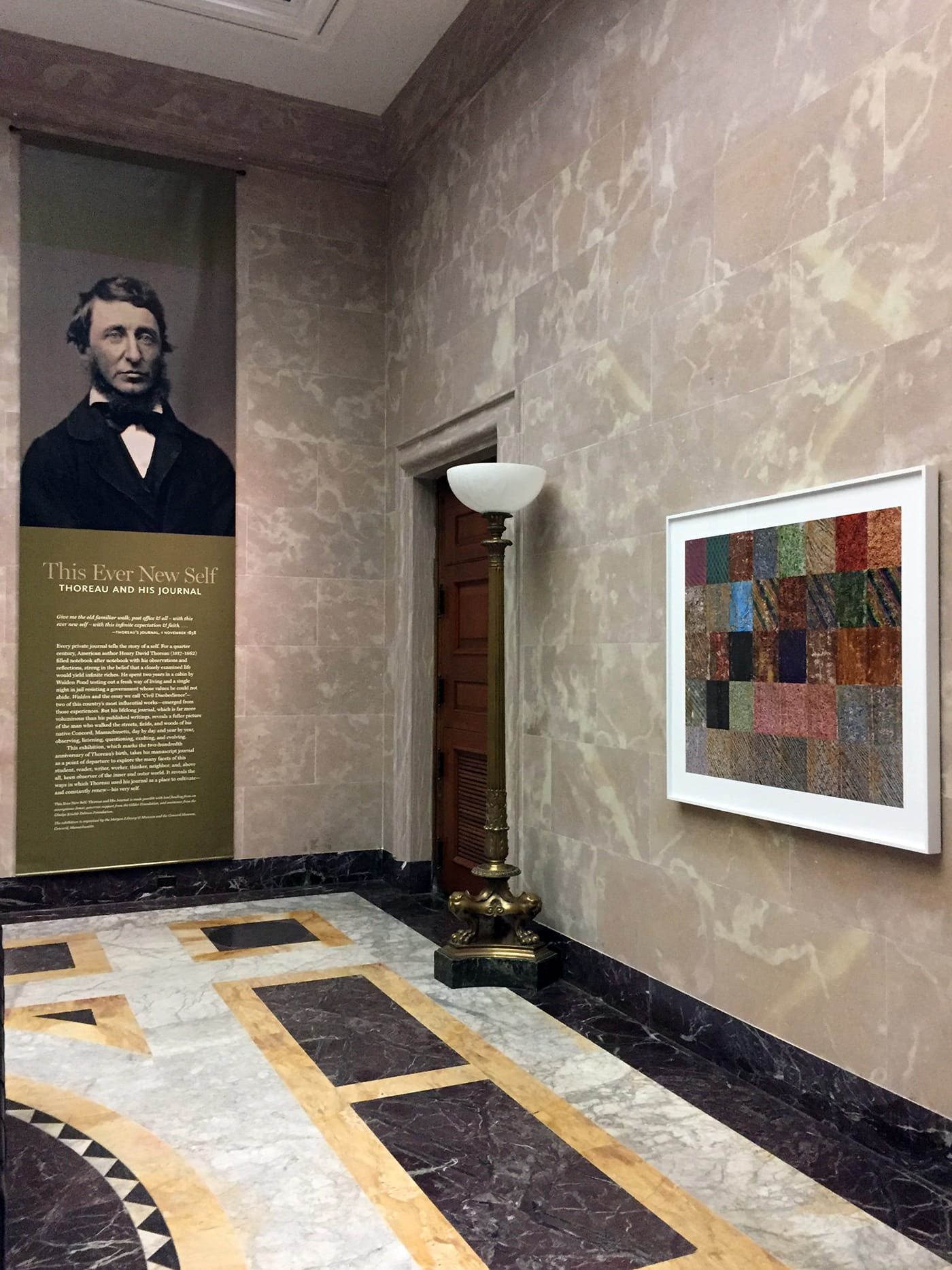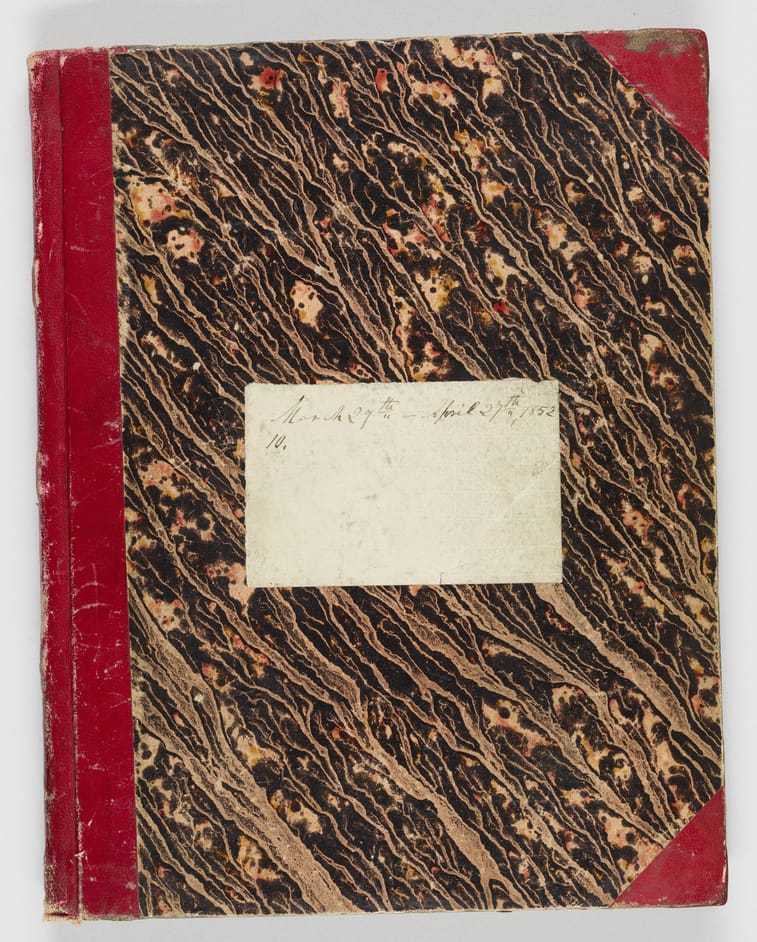A Photographer’s Donation to a Museum Honors Its Security Guards
Abelardo Morell's photographic map of Henry David Thoreau's journals was gifted to the Morgan Library & Museum in honor of its security guards.

Where once visitors to the Morgan Library & Museum in Manhattan would see the gilded names of its wealthy founders, there is now a grid of well-worn books, each representing one of Henry David Thoreau’s journals that he kept for 24 years in the 19th century. This photographic collage by artist Abelardo Morell was donated in honor of the Morgan security guards, recognizing their sometimes unsung role at the museum.

“I was a night guard at the Morgan in 1979,” Morell told Hyperallergic. “I grew up in a working class Cuban American home. Despite my successes in this country, I continue to remain mindful of the work that so many provide to make this country work. Dedicating this piece to the guards is my way to show appreciation for them.”
Called “Thoreau: 40 Journals in Chronological Order,” it’s up through September 10 in conjunction with This Ever New Self: Thoreau and His Journal. Many of the 39 journals Morell and his assistants photographed at the Morgan are in the exhibition, which was organized by Christine Nelson, the Morgan’s curator of literary and historical manuscripts, with David Wood of the Concord Museum. The Concord, Massachusetts, museum in Thoreau’s hometown recently exhibited Morell’s panoramic photographs of Walden Pond, and This Ever New Self will open there on September 29.
“When Thoreau was 24, he wrote in his journal about his uncanny responsiveness to books from the past: ‘Nothing so restores and humanizes antiquity … as the discovery of some natural sympathy between it and the present,’” Nelson explained. “Abe Morell brought just such a ‘natural sympathy’ to Thoreau’s journals. He responded to the physical notebooks with sensuousness and — I have to say — love.”

The title of the exhibition that Nelson chose — This Ever New Self — refers to how Thoreau used his journaling as a form of daily renewal. And the wear portrayed in Morell’s photographs of the journals, from the author’s own hands and those of friends, scholars, librarians, and others drawn to his meditations on thoughtful living, reflects how his writing is continually renewed for contemporary audiences. (See, for instance, the video game interpretation of Walden: Or, Life in the Woods.) Near Morell’s work, Morgan visitors can discover a 1976 score by John Cage called “Renga,” for which the composer used 361 illustrations from Thoreau’s journals for musical notes. “It’s thrilling to me to see this vital line from antiquity to Thoreau to Cage and Morell and all of us,” Nelson said. “As Thoreau wrote in his journal, ‘Any living word in these books abolishes the difference of time.’”
Likewise, although Morell’s piece organizes the journals chronologically as a kind of map, there is a flattening of time between the viewer and the late American author. The Marble Hall where Morell’s donation is on view was the original entrance to the Morgan, and it’s significant that the work is not only highlighting an important part of the institution’s collections, but also the guards who make its public access possible.
“I have always believed that the physical nature of books counts as much as the intellectual and narrative content within them,” Morell stated. “These Thoreau journals hold American history and poetry, but it’s unthinkable to fully conceive these words without appreciating the beautiful material containers of these sentences in these tomes.”

This Ever New Self: Thoreau and His Journal continues through September 10 at the Morgan Library & Museum (225 Madison Avenue, Midtown East, Manhattan).





